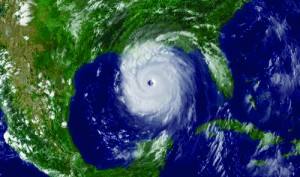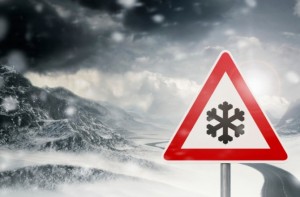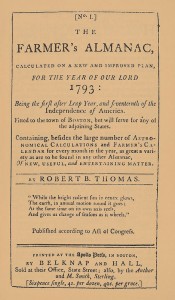As much as people might try to deny it, winter is coming to the northeast. According to The Old Farmer’s Almanac, it is going to be brutal. There may be some hope, however, for those who despise the cold: The National Oceanic and Atmospheric Administration (NOAA) is predicting a milder winter. Most importantly, what arises from this discrepancy is that predicting the weather is much more complicated and nuanced than the public knows.

The almanac predicts “below-normal temperatures” for almost 75 percent of the country, with the Northern Plains and the Great Lakes being hit the hardest. It alsosuggests that theeastern coastal region has a snowy winter ahead. While NOAA is not set to release its detailed winter forecast until mid-October, the patterns it is picking up as of now do not seem to indicate a harsh winter. Historically, The Old Farmer’s Almanac has been more accurate than NOAA, but both of these systems are only predictions. The methods each uses reveal the complex science of weather prediction.
The Old Farmer’s Almanac was first published by Robert B. Thomas in 1972. Like other almanacs of its time, it predicted sunsets, sunrises, tides, weather, and an abundance of other natural occurrences. This particular almanac, however, was said to be accurate 80 percent of the time, almost twice as often as any competing publication. Thomas had devised a secretive weather forecasting formula based on a complicated system of observed natural cycles. To this day, the formula is hidden away in a black tin box.

NOAA prides itself on pursuing forecasts from an entirely scientific – and entirely transparent – approach. Researchers use the North Atlantic Oscillation index to predict winter weather and precipitation. This index, however, can only predict forecasts three or four weeks in advance, as opposed to predictions months ahead of time by the Almanac. The NOAA collects data from a series of 120 forecast centers and relies on information gathered from various weather satellites located from Maryland to Hawaii. They gather information on everything from cloud systems to city lights, fires, effects of pollution, auroras, sand and dust storms, snow cover, ice mapping, boundaries of ocean currents, and energy flows.
The NOAA also has Doppler weather radars to detect precipitation velocity via application of the Doppler Effect. Atmospheric objects that move toward the radar produce a positive shift in the frequency of the radar signal while outbound objects provide a negative shift. The changes in frequency effectively allow meteorologists to see motion in the atmosphere, and to track storms. At any given time, NOAA is running advanced algorithms that are updating the weather outcomes. This is part of the reason why a weatherman’s prediction is always changing.
Weather satellites used by NOAA carry radiometers that continuously scan the Earth to form images and create weather models. Radiometers are usually comprised of infrared or microwave radiation detectors, small telescopes, and scanning devices. The satellites produce images in less than a minute. These images are delivered in the form of electric voltages. Many of the satellites that transmit images to the Internet or television stations are in a geostationary orbit, rotating with the speed of the Earth to allow a continuous view of the same geographic area. This complicated technology reflects another reason why weather forecasts are frequently updated.
Each of these technologies has its own advantages. While The Old Farmer’s Almanac is more of a general speculation on a long-term basis, it boasts a great deal of accuracy. Government scientists working with NOAA maintain an image of reputability, but their “long-term” predictions, really 90 days at max, have at most 60 percent accuracy. NOAA, however, is able to give an incredibly detailed forecast in the short-term. Researchers there are making tremendous advances in predicting the extent and timing of extreme weather, which has become an increasing threat worldwide.

Overall, it is important to acknowledge that meteorology is by no means an exact science, and to dispel the myth that any weather forecast is simple. In reality, the science of weather prediction is anything but straightforward. Weather patterns evolve. The algorithms behind forecasting the weather are tremendously complicated, and accordingly, weather forecasting technology is advancing at an exponential rate. Still, uncertainty regarding the weather persists.
